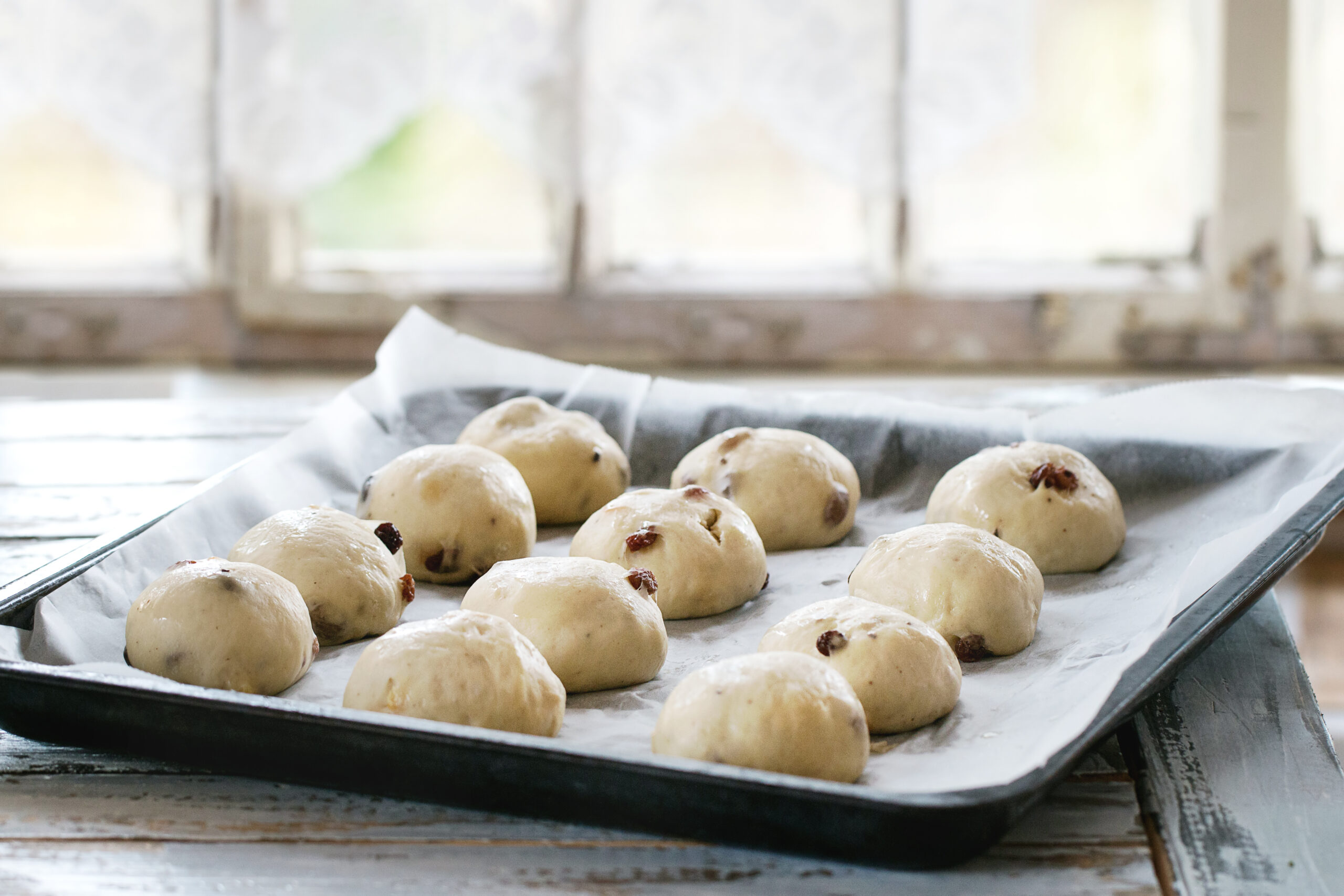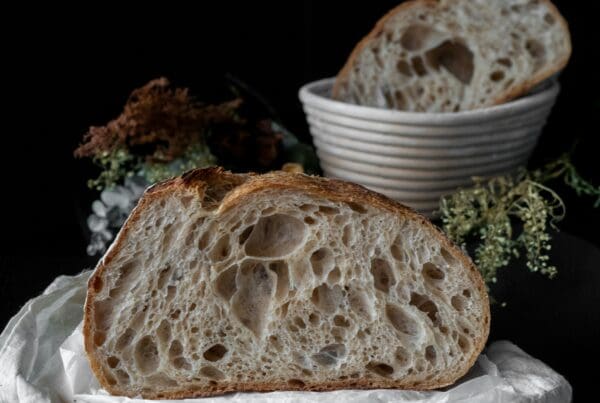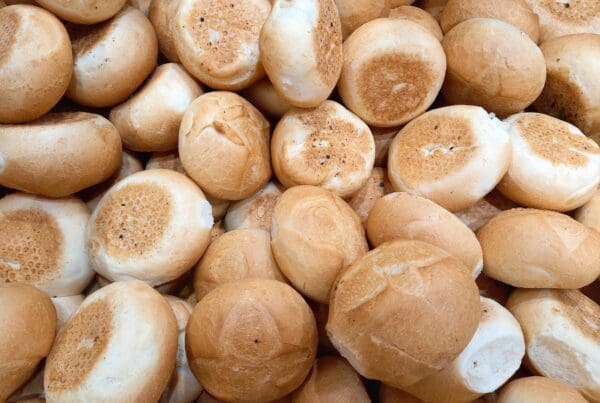We have all made a multitude of embarrassing and easily avoidable mistakes in the kitchen, but practice makes perfect and here are some tips and tricks we at Food Paper have learnt over the years.
These are the top ten tips to follow for every baker.
- Always Have the Correct Butter Consistency
Butter is the starting point for an immense amount of baked goods, so it’s important to have it prepped as the recipe suggests. The temperature of butter can dramatically affect the texture of baked goods. There are three different consistencies of butter that baking recipes typically call for: softened, chilled (or frozen like in scones), and melted.
Most recipes calling for butter call for room temperature/softened butter. Room temperature butter is actually cool to touch, not warm. When you press it, your finger will make an indent. Your finger won’t sink down into the butter, nor will your finger slide all around. To get that perfect consistency and temperature, leave butter out on the counter for around 1 hour prior to beginning your recipe.
Chilled butter is butter that has been well chilled in the refrigerator or freezer so that it does not melt during mixing. This helps create flaky pockets in recipes like pie crust, scones, and biscuits.
Unless otherwise noted, melted butter should be liquified and lukewarm. If melted butter is too hot, it can cook the eggs in your batter. I prefer to use melted butter in brownies and my chewy chocolate chip cookies. - Room Temperature is Key
Speaking of temperature, if a recipe calls for room temperature eggs or any dairy ingredients such as milk or yogurt, make sure you follow suit. Recipes don’t just do that for fun– room temperature ingredients emulsify much easier into batter, which creates a uniform texture throughout your baked good. Think of cold, hard butter. It’s impossible to cream cold butter into a soft consistency necessary for some recipes. Same goes for eggs– they add much more volume to the batter when they’re at room temperature.
So yes, temperature is imperative. There’s legitimate science involved! - Read the Recipe twice!
I can’t tell you how many times I’ve had a complete recipe disaster because I didn’t realise a certain step was coming up. Reading ahead will help you know the how, why, where, and when of what you are about to do. It will take you 1-5 minutes and could save you from wasting your ingredients (and money!) on a failed recipe. - Always Have Ingredients Prepped
Measure your ingredients before starting a recipe. Read through the ingredients, then get them prepared on your counter. There’s very little room for error when you begin recipes this way; you’re not scrambling and rushing during the recipe process.
And avoid making ingredient substitutions. Remember, baking is chemistry. Make the recipe as written first then if you feel confident, make substitutions as you see fit. - Learn How to Measure
This is actually one of the most important baking tips on this page. As you know, baking is science. Excellent baking requires precise ratios, proven techniques, and well-tested recipes. Unlike cooking, you can’t just bake something by throwing some ingredients together, mess it up, then eat it anyway.
One of the most crucial baking tips is measuring ingredients properly.
Problems are common if measurements are incorrect. Having a firm grasp of measuring techniques is essential. Measure dry ingredients in measuring cups or spoons because these are specially designed for dry ingredients. Spoon and level (aka “spoon and sweep”) your dry ingredients. This means that you should use a spoon to fill the cup and level it off. This is especially important with flour. Scooping flour (or any dry ingredient) packs that ingredient down and you could be left with up to 150% more than what’s actually needed. A recipe calling for 1 cup of flour and baked with 2 or more cups instead will surely result in a fail. And a rather dry baked good! And for liquid ingredients, use clear liquid measuring cups. - Weigh Your Ingredients
A small kitchen scale is priceless! It is, by far, the most used tool in my kitchen. A gram or ounce is always a gram or an ounce, but a cup isn’t always a cup. This is why I offer gram measurements with my recipes. Again, precision is everything. - Get an Oven Thermometer
I use my ovens so much that the temperatures are sometimes off. Yes, the actual oven temperature can be much higher or lower than what the controller says. I’ve worked with 6 different sets of ovens in the past 10 years (all different brands) and after a period of time, each have been slightly off.
Use an oven thermometer. Place it in the center of your oven. Some hang from the racks or can be placed directly on the bottom of the oven. While inexpensive, they’re irreplaceable in a baker’s kitchen. Place it in your oven so you always know the actual temperature. - Keep Your Oven Door Closed
You now know how the oven’s temperature can ruin a recipe. But what can completely throw off the oven temperature is constantly opening and closing the oven door to peek inside. I know you’re excited about what’s baking! It’s so tempting to keep the oven ajar to see your cake rising, cookies baking, and cupcakes puffing up. But doing so can let cool air in, which interrupts the baked good from cooking and/or rising properly. - Chill Your Cookie Dough
Chilling cookie dough in the refrigerator firms it up, decreasing the possibility of over-spreading. Chilling cookie dough not only ensures a thicker, more solid cookie but an enhanced flavor as well. Not only this, cold cookie dough is much easier to handle and shape. In soft chocolate chip cookies, for example, it helps develops a heightened buttery, caramel-y flavor. After chilling, let your cookie dough sit at room temperature for about 10 minutes (or more, depending how long the dough has chilled) before rolling into balls and baking. Sometimes after refrigeration, cookie dough can be too hard to roll/handle. - The Cookie Trick
Last baking tip and it’s all about cookies. To keep leftover cookies extra soft, store them with a piece of bread. Have you heard of this before? If storing cookies in a container or cookie jar, stick a regular piece of bread in there as well. The cookies will absorb all of the bread’s moisture, leaving the bread hard and the cookies extra soft. And they’ll stay soft FOR DAYS!
When it comes to baking, it pays off to be a perfectionist. Hopefully these baking tips will help bring you the recipe success and kitchen confidence you crave.
And of course, don’t forget to use the right kind of baking paper for the job. The right quality baking paper will make all the difference to your bakes.
Learn more about Linwood Raker: www.linwoodraker.co.uk
Discover Food Paper the recyclable and sustainably sourced siliconised baking paper. Request your FREE trial here




